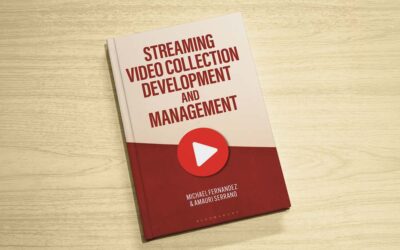Exploiting Socially Distanced Opportunities in GLAM – Crowdsourcing
Miriam Kahn, MLS, PhD
A type of project within special libraries and heritage organizations is crowdsourced transcription, which leverages the skills of Special Librarians and Archivists while social distancing during the pandemic.
Having begun these time intensive projects long before this year-long period of ‘social distancing’, Special Libraries, Museums, and Archives continue to embrace them. There’s certainly no reason to expect archivists and librarians to stop asking for help transcribing manuscripts and documents or collecting data.
Transcription projects range from simple typing to indexing, from interpretation of nineteenth and twentieth century writing styles to deciphering early modern manuscript hands, to collecting data. Of course, special collections librarians and archivists provide training in transcription, proofreading, and editing as they streamline activities. Ultimately, finished projects are made available to researchers everywhere through online catalogues and finding aids attached to catalog records.
Crowdsourced transcription is just the newest trend in a long history of transcription projects.
Crowdsourcing transcription gets people involved
Transcription projects often celebrate a person or the anniversary of an event. These collaborative initiatives are a win-win for the cultural institution library. Librarians and archivists in Special Libraries, Archives, and Museums harness the time, skills, and talents of volunteers who transcribe and index. Institution gets finished projects, and in turn promote the completion of both long-dormant and top priority projects.
Educational objectives of reading, writing, editing, and even interpretation are fulfilled through transcription projects, by both the participant and the researcher or the user. A side benefit is the information collected and extracted from the transcribed and now machine-readable materials can be analyzed and shared with big-data projects.
Best of all, Special Libraries, Archives, and Museums can use crowdsourcing transcription projects for outreach, promoting participation through social media and video programs through social engagement and educational programming at all academic levels from K-12 through graduate schools. Each completed step of the project can be added to special library and archive catalog records and websites.
Expand your Crowdsourcing Horizons
Crowdsourcing transcription means utilizing the skills of many individuals for a variety of projects. Your Special Library, Archives, or Museum has projects just waiting for volunteers. Perhaps there’s a collection of letters waiting to be transcribed, or unindexed photographs that intersect with an upcoming exhibit or anniversary. What better way to complete the project quickly and efficiently than crowdsourcing transcription and indexing?
Many materials in Special Libraries, Archives, and Museums are suitable for crowdsourcing endeavors including handwritten letters and journals; printed materials that are indexed and tagged for easier access through web searches; photographs; science and natural history materials and specimens; sound recordings and oral histories, and the multitude of government records. When each phase of the project is completed, records and transcriptions can be added to online catalog records.
Before embarking on crowdsourcing transcription and data collecting projects:
- Write clearly defined and described instructions.
- Compile controlled vocabulary and suggested ‘natural language’ terms and tags.
- Break the project into manageable parts.
- Run some tests to find the pitfalls and problems.
- Provide examples and answers to common questions in the FAQ.
- Limit participation.
- Appoint project supervisors to answer questions actively and coherently.
Examples of Crowdsourcing projects
- “By the People” is the Library of Congress’ crowdsourcing campaign https://crowd.loc.gov/about/ . It was launched in 2018 to commemorate the 155th anniversary of the Gettysburg Address. Volunteer transcribers in the LOC transcription crowdsourcing project transcribed over 300,000 pages. When completed, catalog records are updated and available through LOC’s online catalog. Today, LOC is marketing their project in a number of online outlets including “mental floss” https://www.mentalfloss.com/article/643536/library-congress-needs-help-transcribing-james-garfields-diaries and HistoryHub page https://historyhub.history.gov/community/crowd-loc
- Citizen Science harnesses the energy of archivists through the National Archives to improve access to historical records through crowdsourcing https://www.citizenscience.gov/citizen-archivist/# and https://www.archives.gov/citizen-archivist
- Smithsonian Digital Volunteers Transcription Project mines the Smithsonian Museums collections for crowdsourcing transcription projects. While many are complete, there are still plenty of projects to participate in across their vast network of museums https://transcription.si.edu/browse
Even small organizations, special collections, museums, historical societies, and archives are using crowdsourced input to improve access to information. “Bioblitz”, National Geographic, or iScience are all part of crowdsourced transcription and data collections projects focused on STEAM & STEM materials. Each completed project contributes to and expands online catalogs, research resources, and subject indexes.
- Akron County Citizen Science Program is one of the largest and most active in Northeast Ohio. Hundreds of volunteers dedicate time to collect data. It is an expansion of one of the park district’s long-term programs https://www.summitmetroparks.org/citizen-science-program.aspx
- iNaturalist observations are independently identified and verified as research-quality data, no matter how small, and contribute directly to science https://www.inaturalist.org/pages/bioblitz+guide
- BioBlitz is a National Geographic event that focuses on finding and identifying as many species as possible in a specific area over a short period of time. At a BioBlitz, scientists, families, students, teachers, and other community members work together to get a snapshot of an area’s biodiversity https://www.nationalgeographic.org/projects/bioblitz/
Summing It Up
Crowdsourcing transcription, indexing, and data collection is one way to boost engagement of your researchers and potential donors. Participants gain perceived ownership in the project and finished project or collected data.
Crowdsourcing isn’t “work for hire” but the perfect volunteer opportunity for library and archives professionals, and/or engaged individuals who want to participate in projects at your institution. Finished projects enhance your online catalogs and websites, building the online and social media presence for your special library, archives or museum.
Additional Resources:
Victoria Van Hyning, Samantha Blickhan, and Laura Trouille, Chris Lintott, “Transforming Libraries and Archives though Crowdsourcing” D-Lib Magazine V23 no. 5/6 (May/June 2017) http://www.dlib.org/dlib/may17/vanhyning/05vanhyning.html
Zooniverse: a multidisciplinary crowdsourcing aggregator http://Zooniverse.org
New York Public Library “Labs” https://www.nypl.org/collections/labs
Miriam Kahn, MLS, PhD
Miriam B. Kahn, MLS, PhD provides education and consulting for libraries, archives, corporations, and individuals. See Miriam’s pieces for Lucidea covering library technology and skills and strategies for special librarians. Refresh your knowledge of Lucidea’s flagship ILS, SydneyEnterprise, here.
Never miss another post. Subscribe today!
Similar Posts
Growing Your Leadership Skills: 7 Tips for Special Librarians
Great library leaders aren’t born—they’re made through learning self-reflection and practice. Here are seven strategies to help you grow and lead with impact.
Keeping Up with Copyright and Generative AI: What Special Librarians Need to Know
As generative AI becomes more prevalent copyright law is evolving to address its impact. A new report from the U.S. Copyright Office provides guidance on what is (and isn’t) copyrightable.
Understanding Shadow AI: Risks Costs and Governance
AI can enhance search discovery and efficiency but unsanctioned adoption—known as “shadow AI”—can lead to budget overruns and compliance risks. Here’s how to evaluate AI pricing models and build a governance strategy that balances innovation with cost control.
Interview with an Author: Fernandez on Streaming Video Collection Development
As demand for streaming video in libraries grows so do the challenges of managing access budgets and licensing. Co-author Michael Fernandez shares key insights from his book “Streaming Video Collection Development and Management”.






Leave a Comment
Comments are reviewed and must adhere to our comments policy.
0 Comments